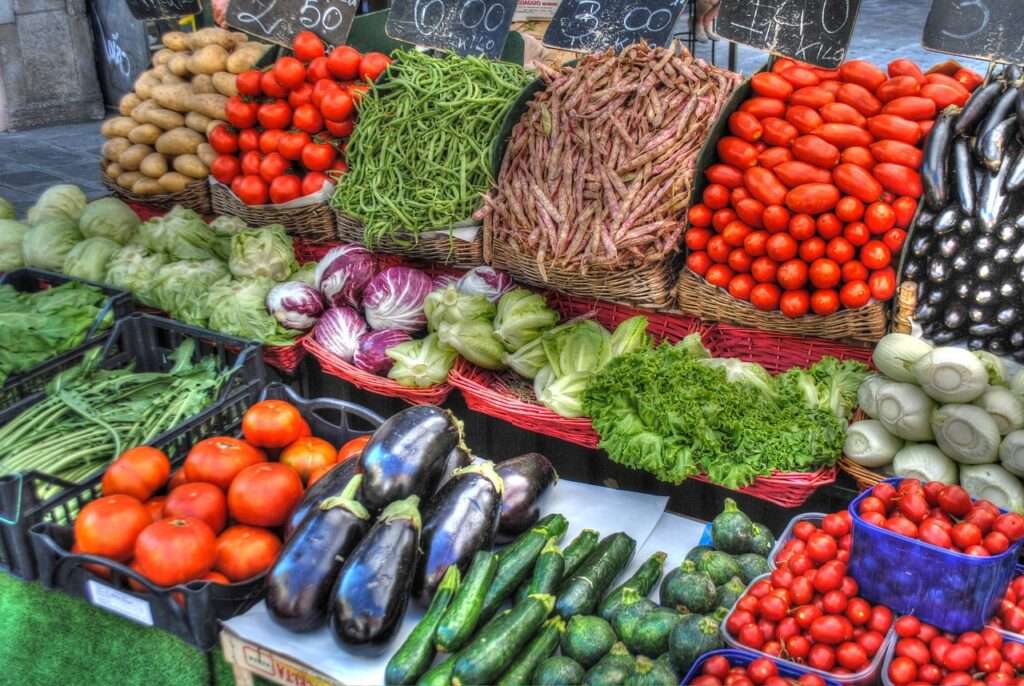
Food Waste Reduction in India's Cold Supply Network: A Contextual Analysis
Food waste is an economic and environmental catastrophe that requires our immediate attention. In India, 40 % of the food is wasted after harvest. Indian farmers face many challenges such as overripe or rotten produce that cannot be sold, leading to substantial wastage.
# 1. India: Second largest food waster in the world
According to the Ministry of Agriculture (Govt of India), Rs.89,000 crores of food produced gets wasted every year, out of which more than Rs 1400 crore of food gets wasted due to insufficient cold storage and unorganised logistics.For instance, a farmer in northeastern India threw away about 30 % her crop last year due to fruit spoilage. A report by Emerson, a global engineering and technological company, has revealed that India is the largest producer of milk and second largest producer of food and vegetables, however the second largest food wasters in the world after China. India wastes more fruits and vegetables than the entire United Kingdom consumes and more grains than Australia produces. India is one of the largest food producers of the world and can cater to the whole country’s food requirement.
#2 Factors contributing to food wastage:
- Harvest losses: Soon after harvest, if the food commodities are not handled properly, then it deteriorates the quality of the food.
- Overloading mismanagement: Commodities are packed in excess quantity to save the cost of transportation which often degrades its quality.
- Mismanagement in the warehouse: Most warehouses employ untrained locals at minimum wages which leads to many management issues such as failure to rotate inventory, older produce remains unused and get spoiled, improper stacking, lack of proper pest control, and inadequate temperature and humidity control.
- Improper handling and distribution: Poor handling and transportation under uncontrolled environmental conditions degrade the quality. For instance, if a dairy product is transported to a local store in a non-refrigerated vehicle during a hot summer day (> 40°C), it will result in spoilage of the product.
- Political hindrances across borders: Political obstacles across state borders can impede the smooth transportation of food produce, causing delays and disruptions in supply chains.
#3 Impact of Food Wastage:
- Hunger and Malnutrition: According to a report released by Feeding India, around 4.3% of the population are not receiving adequate nutrition. India is also ranked in the 107th position out of 121 countries in the Global Hunger Index, 2022.
- Global Impact: Food waste in India is more than just a national issue; it has a global impact since food is a universal commodity that is not limited to a certain country. Food production uses a large number of natural resources such as land and water. The environmental risks linked with waste are also significant, resulting in the release of superfluous carbon, which might have disastrous consequences.
- Economic Loss: In India, food waste totalling about 89,000 crore per year represents approximately 1% of the country’s GDP.
#4 Efforts to Reduce Waste
- Streamlining the Supply Chain: Food waste may be significantly reduced by using effective supply-chain strategies such as cold storage facilities and improved inventory management.
- Policies: The government must take appropriate steps to sign policies in collaboration with the Food and Agriculture Organisation (FAO) and the United Nations to minimise national food waste and encourage stakeholders of supply chain of food produce to reduce waste through reward programmes. The Government of India (GOI) has schemes which subsidizes cold chain business.
#5 Cold supply network in India
Cold storage presents an avenue for India to mitigate food wastage. However, improper management of cold storage facilities, untrained manpower leads 20-35% food in the storage itself. To ensure such facilities are available in the country, the ministry of agriculture had passed an order as " Cold Storage Order 1964. However, the cost of establishing and maintenance of cold storage is still high even after GOI’s subsidized scheme.
As per the Horticulture Board, there is a shortfall of 90% in Cold Storages in India. 60% of India’s cold storages are located in 4 states only i.e., Gujarat, West Bengal, Uttar Pradesh & Punjab. India’s farm economy requires 61 million tons of cold storage but currently there is only a total capacity of about 24.4 million tons — three-fourths of that is meant to store potatoes, leaving no room for storing other commodities. Due to the lack of space, the other existing resources are misallocated, so about 80% of the cold storages for potatoes are being used for holding other mixed produces & vegetables.
During the harvest season, commodity prices plummet and waste increases, prompting stakeholders to take undesirable cost-cutting measures such as:
- Transportation expenses to the mandi or storage facilities exceed the commodity’s value, prompting farmers to either discard it or sell it at a reduced price in the local market.
- Farmers find it financially burdensome to cover the steep rent of cold storage, which surpasses the commodity’s value due to the extensive maintenance costs associated with the facility.
- The cost of refrigerated transportation is higher than the non-refrigerated transportation. For example, a trip longer than 500 km, refrigerated transport costs Rs 32-36 per km against Rs 20 per km for non-refrigerated transport, additional tolls and bribes eat up another Rs 2-5 per km.
- Packing of excess produce in a box by the farmers (more than the limit) to minimise freight cost and as a result the produce get crushed even reaching before the storage facilities and shelf life is shortened.
Many other factors contribute to the quality degradation and food waste such as technical standards vary in local storages and lack of accountability by stakeholders in the supply chain.
#6 Room for Improvement:
- More Cold chain: More cold chain networks in India would significantly improve food preservation capabilities, reducing spoilage and extending the shelf life of perishable goods.
- Investment in Logistics Networks: Investment in the logistics network of the cold supply chain is crucial for ensuring the efficient and reliable transportation of perishable goods from production to consumption. Such investment involves the development and enhancement of infrastructure, including cold storage facilities, refrigerated transportation vehicles, and temperature monitoring systems. investing in cold chain logistics contributes to economic growth, job creation, and the overall sustainability of the food industry.
- Establishing renewable energy cold storage units: Implementing sustainable solutions like solar-powered cold storage units can help mitigate these losses and improve the livelihoods of farmers while contributing to environmental sustainability.
- Tech Driven Cold Chain & Centralised Data System on total production, storage and movements of Goods: Technology offers various solutions to existing challenges, including those in cold chain warehousing and logistics. Implementing a comprehensive data logging system from harvest to distribution can streamline operations effectively, ensuring optimal temperature and humidity levels to prevent food wastage and mitigate price fluctuations.
#7 Technological solution offered by HyperAtmos
EVAP technology of HyperAtmos represents a resilient, industrial-grade standalone system designed for continuous real-time and remote monitoring of temperature and humidity. Through our proprietary IoT platform, ‘HyperDash,’ EVAP offers end-users and clients real-time access to data. The threshold limits for temperature and humidity parameters are customized during installation to meet storage facility requirements. It provides standard connectivity options and wireless communication capabilities common in the industry. Any violations trigger alerts to the management team through both audible alarms and the online platform, enabling timely intervention to prevent product deterioration. EVAP is also equipped with a relay for any automation process. The visualisation of the real-time data on the environmental parameters allows the user to understand and analyse their environmental impact. Analysis of the real-time data with historical data helps in environmental data predictions and forecasting. With the aid of EVAP technology interventions the quality and shelf life of food can be substantially improved.
